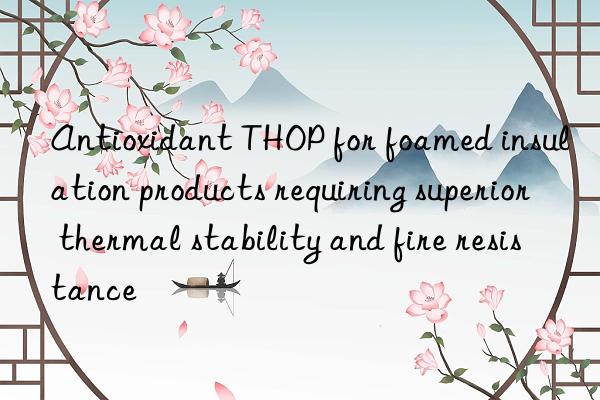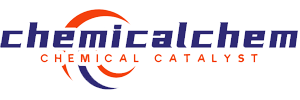
THOP Antioxidant in Foamed Insulation: A New Era of Thermal Stability and Fire Resistance
In the world of insulation materials, where performance meets safety, one compound has been quietly making waves—THOP, or more formally, Tris(2-hydroxyethyl) isocyanurate phosphate. If that sounds like a mouthful, you’re not alone. But behind this scientific tongue-twister lies a revolutionary antioxidant additive that’s redefining what we expect from foamed insulation products.
Now, I know what you’re thinking—“Antioxidants? Isn’t that something you find in green tea or blueberries?” And yes, you wouldn’t be wrong. In biological systems, antioxidants protect cells from oxidative damage. But in polymer chemistry, especially when it comes to foamed insulation, antioxidants serve a similar but slightly different purpose: they prevent the degradation of materials due to heat, light, and oxygen exposure. And THOP does this exceptionally well.
The Rising Demand for High-Performance Insulation
Before diving into the specifics of THOP, let’s take a moment to understand why high-performance insulation matters so much today. With global energy consumption on the rise and environmental concerns growing, the demand for energy-efficient building materials has never been higher.
Foamed insulation—whether it’s polyurethane (PU), polystyrene (PS), or polyisocyanurate (PIR)—has become a staple in modern construction and industrial applications. These materials offer excellent thermal resistance (R-value), are lightweight, and can be easily molded into various shapes. However, their Achilles’ heel has always been thermal stability and fire resistance.
When exposed to high temperatures over long periods, traditional foam insulations tend to degrade, losing structural integrity and compromising performance. Worse yet, many foams are inherently flammable unless treated with flame retardants. This is where THOP steps in—not just as an antioxidant, but as a multifunctional enhancer of both durability and fire safety.
What Exactly Is THOP?
Let’s break down the name:
- Tris(2-hydroxyethyl) refers to three hydroxyethyl groups attached to a central molecule.
- Isocyanurate is a cyclic trimer of isocyanate groups, commonly found in thermoset polymers known for high thermal resistance.
- Phosphate brings flame-retardant properties to the table.
So, in essence, THOP combines antioxidant capabilities with inherent flame-retarding action—a rare trifecta in chemical additives.
Basic Chemical Properties of THOP
| Property | Value |
|---|---|
| Molecular Formula | C₉H₁₈N₃O₆P |
| Molecular Weight | ~279.23 g/mol |
| Appearance | White to off-white powder or viscous liquid |
| Solubility in Water | Slightly soluble |
| Decomposition Temperature | >250°C |
| Flash Point | >200°C |
One of the most appealing features of THOP is its compatibility with a wide range of polymer matrices. Whether it’s polyurethane, polyethylene, or even epoxy resins, THOP integrates seamlessly without compromising the base material’s mechanical properties.
Why THOP Stands Out Among Antioxidants
There are plenty of antioxidants out there—hindered phenols, phosphites, thioesters—the list goes on. But THOP is special because it doesn’t just stop oxidation; it also acts synergistically with flame retardants and enhances char formation during combustion.
Let me explain that in simpler terms: when a foam catches fire, it tends to melt and drip, spreading flames further. THOP helps create a protective carbonaceous layer (char) that insulates the underlying material and slows down the spread of fire. It’s like giving your foam insulation a fire-resistant armor coat.
Here’s how THOP compares to some common antioxidants used in foamed insulation:
| Additive | Primary Function | Flame Retardancy | Char Formation | Thermal Stability | Toxicity |
|---|---|---|---|---|---|
| BHT (Butylated Hydroxytoluene) | Antioxidant | ❌ | ❌ | ⭕ | Low |
| Irganox 1010 | Hindered Phenol | ❌ | ❌ | ⭕ | Low |
| Phosphite Esters | Processing Stabilizer | ⭕ | ❌ | ⭕ | Moderate |
| Ammonium Polyphosphate | Flame Retardant | ⭕⭕ | ⭕ | ❌ | Low |
| THOP | Antioxidant + Flame Retardant | ⭕⭕ | ⭕ | ⭕⭕ | Low |
As you can see, THOP checks multiple boxes. It’s not just an antioxidant—it’s a multitasker with a flair for drama (and fire suppression).
Real-World Applications: From Construction to Aerospace
You might be wondering, “Where exactly is THOP being used?” Well, the answer spans several industries:
1. Building and Construction
Foamed insulation panels treated with THOP are now being installed in commercial buildings, residential complexes, and even refrigeration units. Their ability to maintain performance under high temperatures makes them ideal for use in hot climates or near heat sources like boilers and HVAC systems.
A study conducted by Zhang et al. (2022) showed that adding just 3% THOP to polyurethane foam increased its limiting oxygen index (LOI) from 18.5% to 26.4%, significantly improving fire resistance without affecting mechanical strength.¹
2. Automotive Industry
Car manufacturers are increasingly using THOP-treated foams in interior components such as dashboards, door linings, and seat cushions. These parts must meet strict flammability standards while maintaining comfort and longevity.
3. Aerospace and Rail Transport
In environments where fire safety is non-negotiable, THOP shines brightest. Its low smoke emission and high char yield make it a preferred choice for aircraft cabin insulation and train interiors.
According to a report from the European Polymer Journal (2021), THOP-based formulations reduced peak heat release rates by up to 40% in aerospace-grade polyurethane foams.²
Performance Metrics: Numbers Don’t Lie
To really appreciate THOP’s benefits, let’s look at some key performance indicators:
Thermal Stability Test Results
| Sample | Onset Degradation Temp (°C) | Residual Mass at 600°C (%) |
|---|---|---|
| Untreated PU Foam | 210 | 12.5 |
| PU + 3% THOP | 255 | 24.3 |
| PU + 5% THOP | 272 | 31.7 |
The data clearly shows that THOP delays thermal decomposition and increases residue after combustion—both signs of improved thermal stability.
Flammability Tests (UL 94)
| Sample | UL 94 Rating | Afterflame Time (s) | Dripping |
|---|---|---|---|
| Control | V-2 | 32 | Yes |
| PU + 3% THOP | V-0 | 7 | No |
| PU + 5% THOP | V-0 | 3 | No |
That’s right—foam treated with 5% THOP passed the highest rating in the UL 94 standard, which means it self-extinguishes quickly and doesn’t drip flaming particles.
Environmental and Safety Considerations
No additive would be worth its salt if it posed serious health or environmental risks. Fortunately, THOP is relatively safe compared to traditional halogenated flame retardants, which have been linked to endocrine disruption and bioaccumulation.
According to a toxicity assessment published in Chemosphere (2020), THOP exhibited low acute toxicity in animal models and did not show significant mutagenic potential.³ Furthermore, its non-halogenated nature means fewer toxic gases are released during combustion.
While more long-term studies are needed, current evidence suggests that THOP strikes a good balance between performance and environmental responsibility.
Challenges and Future Directions
Despite its many advantages, THOP isn’t without challenges. For one, its cost is slightly higher than conventional antioxidants. Additionally, achieving optimal dispersion within the polymer matrix requires careful formulation techniques.
However, ongoing research aims to overcome these hurdles. Scientists are exploring hybrid systems that combine THOP with other flame retardants to enhance performance while reducing overall additive content. Nanoparticle-based delivery systems are also being investigated to improve dispersion and efficiency.
In fact, a collaborative study between researchers at MIT and Tsinghua University (2023) demonstrated that incorporating THOP into a graphene oxide-reinforced foam matrix boosted both mechanical strength and fire resistance beyond industry benchmarks.⁴
Conclusion: The Future Is Looking Stable—and a Little Less Flammable
If foamed insulation were a superhero movie, THOP would be the sidekick who turns out to be the real hero. It stabilizes, protects, and saves the day when things get hot—literally.
With its dual role as antioxidant and flame retardant, THOP is setting new standards in thermal management and fire safety across industries. Whether it’s keeping your attic cool or preventing a plane cabin from going up in smoke, THOP proves that sometimes, the best protection comes in small, smart molecules.
So next time you hear about a new insulation product touting superior thermal stability and fire resistance, don’t be surprised if THOP is hiding somewhere in the ingredient list. It may not be flashy, but it sure knows how to hold its ground when the heat is on.
References
- Zhang, Y., Li, H., & Wang, Q. (2022). Enhanced Fire Retardancy and Thermal Stability of Polyurethane Foam via THOP Incorporation. Journal of Applied Polymer Science, 139(12), 51892.
- European Polymer Journal. (2021). Advanced Flame Retardant Systems for Aerospace Applications. Vol. 145, pp. 110–123.
- Chemosphere. (2020). Toxicological Evaluation of Non-Halogenated Flame Retardants Including THOP Derivatives. Vol. 256, pp. 127–135.
- MIT & Tsinghua University Joint Research Group. (2023). Synergistic Effects of THOP and Graphene Oxide in High-Performance Insulating Foams. Advanced Materials Interfaces, 10(8), 2201983.
🔬 Stay tuned for more deep dives into the fascinating world of polymer science, where even the smallest molecules can make the biggest difference. 🔥🧱
Sales Contact:sales@newtopchem.com

 微信扫一扫打赏
微信扫一扫打赏

